
Research shows that an alarming number of veterans returning from military deployment and combat suffer from addiction. The traumatic experiences encountered on the battlefield can overwhelm coping skills and cause mental health conditions.
Veterans who have begun to address their challenges are uniquely qualified to help other veterans. In partnership with Veterans Administration (VA) hospitals across the country, SMART meetings offer veterans the help they need in a safe and supportive environment.
View the full video on our YouTube channel
Learn more about the Veterans programs
Subscribe to the SMART Recovery YouTube Channel
Video storytelling is a powerful tool in recovery, and we are proud to share our SMART Recovery content free-of-charge, available anywhere, on any device. Our videos hope to inform, entertain, and inspire anyone in the recovery community.
Subscribe to our YouTube channel and be notified every time we release a new video.
Subscribe To Our Blog
Join our mailing list to receive the latest news and updates from the SMART Recovery Blog.
You have Successfully Subscribed!
Who are you?
My name is Josh Meisler. I am a social worker and father of two school-aged daughters.
What do you do professionally?
I manage Recovery Support Services programming for Growth Works Inc. We are a non-profit agency based in Wayne County, Michigan.
Do you have any personal interest in addiction and recovery that you’d like to share?
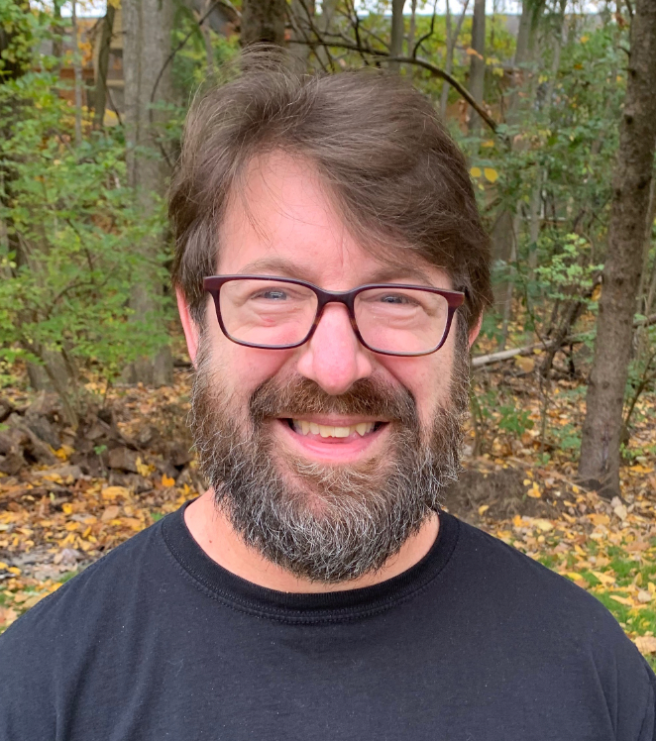
I am a person in long-term recovery from a substance use disorder. My life and the lives of my loved ones and communities have been profoundly shaped by addiction and recovery. Addiction is also a social justice issue, so my broader national and global communities are also shaped by addiction-related issues and circumstances. Those are sources of my personal interest in addiction and recovery.
Tell us about your professional experience in the area of addiction and recovery.
My first position in the field was as a street outreach worker, serving people experiencing homelessness in Boston, MA. Our target populations were substance abusing individuals. I became involved in advocacy through the Massachusetts Housing and Shelter Alliance Substance Abuse Committee.
After spending some time working in agencies that served people experiencing homelessness, I was motivated by the stark lack of services for substance abusing youth as a subset of the populations we served, to find a way to best serve these people in particular.
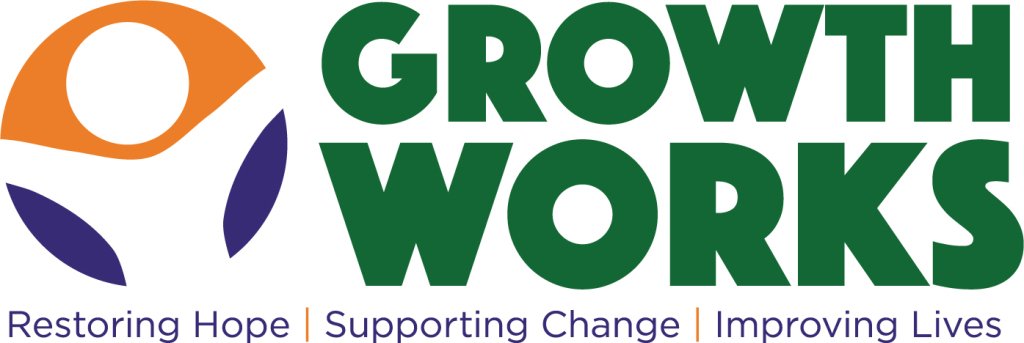
After returning to my home in Michigan, I found a position with Growth Works providing clinical SUD treatment to youth, which really means youth and their families and caregivers, who were adjudicated in Juvenile Drug Treatment Courts in Livingston and Washtenaw Counties.
I was able to help Growth Works establish our Recovery Support Services programs, where we respond emergently to police departments and a hospital, and also provide coaching to our agency’s clinical clients and to participants in sobriety and drug courts in Western Wayne county. When I was offered the opportunity to lead our Recovery Support Services, I moved into my current role as Program Manager.
What are you most proud of?
In my work life? I am proud of establishing Peer Recovery Coaching as a feature of the Juvenile Drug Treatment Court team in Washtenaw County, I think we are the first JDTC in the state to integrate dedicated peer recovery services in that setting. The talented and passionate Coaches in that program have broken ground and I think are developing amazing practices with this needy and wonderful population.
I am proud to be a part of an organization that provides high quality care to many people who might otherwise not have access to it.
The other day I saw the mother of a young person who had been in my treatment program four or five years ago. She approached me, and spoke with passion and emotion about her gratitude for the work we had done with her and her family. Those rare chance meetings are great gifts, and are always my proudest moments.
What keeps you working in addiction and recovery?
I feel extremely lucky to be able to work in our field. I love the people we serve, and I love the opportunity to support individuals who are attempting to change. I know personally as well as professionally that there is a powerful positive ripple effect through our families, communities, and society, when a person with addiction recovers. The little charges we get from running into old clients, and other opportunities to reflect on the change we’ve been able to witness and support, keep me energized and motivated to grow. We have come a long way, and we still have a long way to go.
How has the pandemic affected your work?
It has affected my work profoundly, as with everyone, I expect, because it has affected my life profoundly.
I am extremely fortunate and grateful to work for an agency which made an early and comprehensive commitment to maintain every employee’s compensation and position. That allowed us as employees to really focus on how best to continue to serve our clients, collaborators, and stakeholders, in these unprecedented conditions.
Shifting clinical and recovery support services to remote delivery has been extremely challenging, especially as we serve a lot of folks who are not well connected socially or well-resourced in the best of times. Developing formats and procedures to deliver a variety of individual and group therapy and recovery support services has taken a lot of work. Similarly, working with our many partner agencies and organizations to continue effective collaboration has required a lot of effort and energy.
Personally, the move to working from home, while also providing care to my children and other family members, has been a learning experience, that is not without advantages. It has been good for me and my kids to have more time together, to slow down a little, and to be more focused on our family life. Trying to help them do their school work while I work at the kitchen table is a challenge for all of us.
What effects of the pandemic are you observing in the people you serve?
Well, as we all know, SUD and addiction treatment and recovery are complicated and compounded by socio-economic strain and social isolation. There has been a lot of socio-economic strain and social isolation these past few months. Our clients with co-occurring mental and physical health conditions are most severely impacted. Serving youth and families who are struggling to meet basic needs is difficult in the best of times. There is always a lot of powerlessness and witnessing in our work, now as much or more than ever.
What, if any, long term effects do you anticipate on the field?
Again, I am proud of the way we have been able to pivot to providing services remotely, through telehealth services, rapidly and effectively. Obviously, there are benefits and costs to providing SUD services in these formats. I expect that remote e-services will emerge as a greater proportion of treatment services going forward. I believe that some of what happens between treatment and recovery support professionals and our clients cannot be replicated through a screen, and I worry that our industry will be attracted by the potential cost savings of remote services at the expense of client care.
I expect that many of us will never return to the office or clinic full time, and that is not necessarily a bad thing, especially for those of us who have safe and comfortable spaces to do some work at home. Still, the energy that is generated and shared in an effective “in real life” interpersonal encounter, be it clinical or in support services, can probably never be completely replicated through a screen or a speaker.
Have you seen any benefits or new opportunities in the pandemic?
For whatever reasons, I think we have seen advocacy for addiction, and behavioral health services in general, from some unexpected places through this ordeal. I hope that we can maintain that attention and translate it into dollars and programs with lasting positive effect.
In my work at the intersection of juvenile and criminal justice and addiction, I see the pandemic and the attention to social inequity that has accompanied it in these past 6 months as yet another opportunity to refocus our responses to addiction toward treatment and away from criminalization. In the communities that my agency serves, we see some positive concrete initiatives towards that goal. We have come a long way, and we have a long way to go.
If you were able to work on a fantasy project to improve treatment and recovery support, what would it be?
Wow, that’s a hard question to answer briefly or concisely. My fantasy would be to develop a wholistic system of long-term care for people with addiction and substance use disorders which focused on the underlying causes and conditions that lead many of us into addiction, including lack of education, employment, healthcare, trauma recovery, and other community resources. My friend and colleague Matt Statman reminded me recently of an answer to an interview that Bill White received from a provider in Chicago and I’ll paraphrase it, with apologies, here: We do not have a lack of sufficient Pain to recover, we lack sufficient Hope.
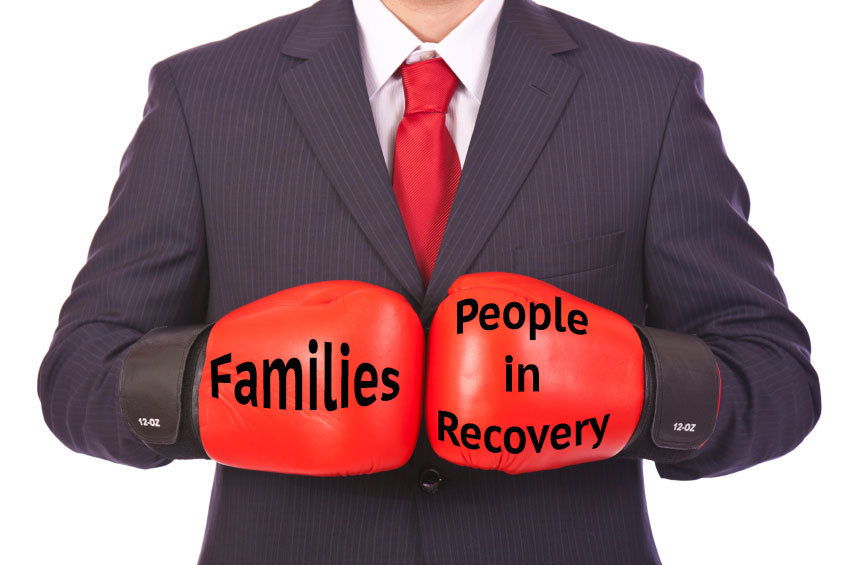
Addiction is an equal opportunity condition. Families get to suffer alongside the person with the problem. But as Alex Copello and Jim Orford noted in a past Addiction editorial, there’s a paradox here that needs attention. Firstly, evidence suggests that when families are involved by treatment services, retention in treatment is better. Retention in treatment is associated with better outcomes. It also suggests that positive outcomes are more likely for the family members. So the evidence is there, what’s the paradox? Copello and Orford are clear:
On the whole service delivery remains focused on the individual drinker or drug user, with families and other members of the user’s social network playing a very peripheral role, if any.’
Copello and Orford, 2002
They go on to say:
With very few exceptions, help for those concerned about the user is reactive, poorly thought out and marginal.
Quite damning really.
Unfortunately, there is evidence that families are also marginalised in addiction recovery research (itself the poor relative of addiction research). In their recently published paper which looks at how individuals in recovery and their families have shared and differing perspectives, Anne Dekkers and her colleagues point out more whammies for families in terms of research interest.
According to Dekkers et al, the focus of existing research mostly attempts to capture the perspectives of individuals in recovery, with a specific focus on transitions from addiction to recovery, the role of substance use and abstinence, the role of treatment, and identity and stigma. So then is nobody interested in families?
Well, of course we are – just not enough to involve them in treatment and research it would seem.
So, what did Dekkers and colleagues find out about the different ways of looking at recovery depending on whether you were a family member or a person seeking recovery? These are explored under themes.
Consequences
There were some shared themes, but also discrepancies. As you might expect it’s the differences that are intriguing. Individuals in recovery (this included those in MAT and those abstinent) and family members both felt the pain and destruction that addiction brings, but while the individuals were focussed on negative consequences to themselves, families were aware of consequences to the individual and the wider family. They felt ‘reduced to powerless bystanders’.
Abstinence
Family members were blunt about this, mostly regarding abstinence as a prerequisite for starting recovery. Individuals in recovery were much more nuanced and saw a range of important factors of which abstinent was one. There was ambivalence amongst some of them around possible future controlled use of substances. There were mixed views on alcohol with some believing it could be safe in recovery. (See recent post on this).
Identity and behaviour
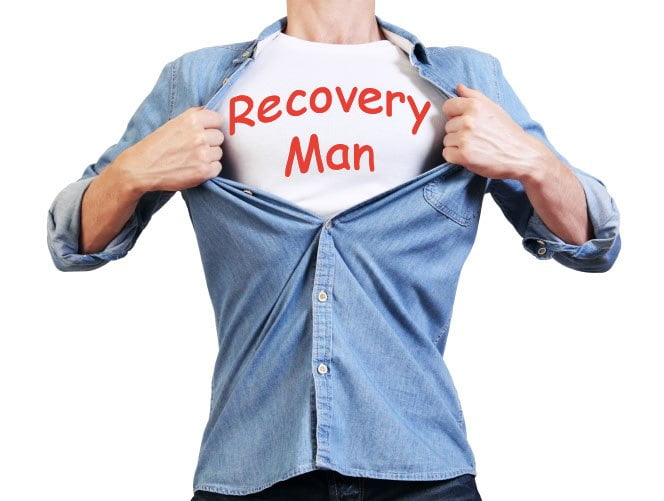
The emphasis for individuals in recovery was in relation to identity and daily life issues, growing as a person for instance, while for families it was looking for changed behaviour, with little interest in changed identity. There were striking differences in expectation of the pace of change – with family members looking for faster progress and anticipating their loved one was further on in the recovery journey than the individual actually judged they were.
Support
Both groups saw the need for this, but for individuals it sometimes felt that support was slow to grow with a rapid decline in trust from family members when relapse occurred. The existing or previous social network often included using friends who were a barrier to recovery. Those individuals whose treatment was in a therapeutic community (TC) spoke of ‘friendships for life’ founded in TC s.
Treatment
Family members felt it important that they were involved in treatment to ‘complete’ the story of the individual. They felt that without this, treatment would be superficial. (I identify – the impact of family therapy in the setting I work in is profound and often brings about profound changes for both the family and the patient). Family members had positive experiences when they were involved but also mentioned the need for long term support. In contrast, individuals only briefly mentioned family involvement in treatment as insightful.
Place in society
Individuals in recovery valued issues related to citizenship/society (in keeping with many definitions of recovery) including regaining their place, but also they saw the part that society could play in their recovery, while family members barely spoke of this. Stigma was experienced though by individuals in society, for instance when they tried to get back into work.
This was small scale qualitative research, but it does highlight the nuance and detail that might be missed in number-crunching research. Clashes clearly occur over expectations on the pace of change, the nature of change, trust and the importance of abstinence.
Bottom line
There are multiple recommendations in the paper which are sound, but specifically on families, they say two things:
- Families want to be involved in treatment and should be
- Families need ongoing support in their own right, and it should be provided
Drug and alcohol deaths
My mind returns to the lack of research on families and how it might relate to substance-related deaths. I’m aware there are no easy answers to the harrowing problem of drug and alcohol-related deaths, but I do wonder if there might be an impact of some kind through having a much more assertive policy of involving family members in treatment and providing ongoing support for them. In addiction treatment we generally underplay the impact of social interventions It would be great to see research to test this out.
In Scotland, we have a national organisation – Scottish Families Affected by Alcohol and Drugs, which is a great resource. They are already trying to do both of the things above, but I wonder how receptive treatment organisations are and what priority local commissioners put on family involvement and support, even though it is embedded in our national drug and alcohol strategy. We fund our own family programme through grant funding rather than statutory funding which tells its own story.
Action
While families are devastated by addiction, family members can and do recover from it. I think that by actively pursuing family treatment involvement and ensuring robust support systems we can do better for them and consequently do better for those individuals with substance dependence. It would be great to see this prioritised in practice and research.

Lately, I’ve been preparing some updates of training materials. In doing so, I’ve gone back and re-gathered old information from original sources once again, as I have done before. This time, it’s been especially interesting.
See what you notice in comparing the definition of addiction from ASAM in 2011, the DSM-5 in 2013, and from ASAM again in 2019.
First, here’s the ASAM short definition from 2011.
Addiction is a primary, chronic disease of brain reward, motivation, memory and related circuitry. Dysfunction in these circuits leads to characteristic biological, psychological, social and spiritual manifestations. This is reflected in an individual pathologically pursuing reward and/or relief by substance use and other behaviors. Addiction is characterized by inability to consistently abstain, impairment in behavioral control, craving, diminished recognition of significant problems with one’s behaviors and interpersonal relationships, and a dysfunctional emotional response. Like other chronic diseases, addiction often involves cycles of relapse and Remission Without treatment or engagement in recovery activities, addiction is progressive and can result in disability or premature death.
Doing some digging, while looking for that old 2011 ASAM definition, I found this (on 10/26/2020):
This policy statement is archived and no longer considered active ASAM policy. Archived statements are available for historical purposes upon request.
I’ll bring in a more recent statement from ASAM later in this post. But next in chronological order is the statement from the American Psychiatric Association’s DSM-5 in 2013. I added the boldface to the word “addiction” so it’s easy to see.
Note that the word addiction is not applied as a diagnostic term in this classification, although it is in common usage in many countries to describe severe problems related to compulsive and habitual use of substances. The more neutral term substance use disorderis used to describe the wide range of the disorder, from a mild form to a severe state of chronically relapsing, compulsive drug taking. Some clinicians will choose to use the word addiction to describe more extreme presentations, but the word is omitted from the official DSM-5 substance use disorder diagnostic terminology because of its uncertain definition and its potentially negative connotation.
And now, back to ASAM. Here’s the current formulation of the ASAM addiction definition (2019):
Addiction is a treatable, chronic medical disease involving complex interactions among brain circuits, genetics, the environment, and an individual’s life experiences. People with addiction use substances or engage in behaviors that become compulsive and often continue despite harmful consequences. Prevention efforts and treatment approaches for addiction are generally as successful as those for other chronic diseases.
I’ll share some of my thoughts, and one final approach to defining addiction.
Overall, I’m content with the ASAM 2011 definition, but I wish it said addiction was “…a primary, chronic bio-psycho-social-spiritual disease involving brain reward, motivation, memory and related circuitry. Dysfunction in these circuits leads to characteristic biological, psychological, social and spiritual manifestations.” As it sits, the ASAM 2011 definition makes addiction merely a brain illness with whole person manifestations.
With the DSM-5 I notice they state addiction is a term used to “describe severe problems related to compulsive and habitual use of substances” and forbid us diagnosing it. I wish the phenomenology of addiction was a disorder we were permitted to find – a qualitatively different problem from only quantifying the number of criteria we count. After all, some people do suffer from this problem.
Looking at the ASAM 2019 definition, I find the first sentence not very helpful. It seems to me that many disorders are a “treatable, chronic medical disease involving complex interactions among brain circuits, genetics, the environment, and an individual’s life experiences” and this does not add much.
Where else can we look?
Readers of Recovery Review might recall work by Norm Hoffmann I have featured previously toward his attempt to answering the question, “What is addiction?”
Here is the bottom line:
In short, Norm Hoffmann has examined the relative weight of each of the 11 DSM-5 SUD criteria, separately, as applied to the probability of having any one or more additional positive criteria for SUD (from data collected on thousands of consecutively incarcerated individuals).
He asks which DSM criteria for SUD are found primarily in severe SUD’s?
Norm’s answer:
- Efforts to control/cut down but unable (rule setting),
- Craving with compulsion to use,
- Failure to fulfill role obligations,
- Activities given up or reduced,
- Withdrawal.
That is to say, in his sample, the presence of any one of these 5 criteria, separately, was more likely than not to be present among 6 or more total positive SUD criteria for any one individual.
In presenting these results from his research, Norm has asked if perhaps the total constellation of The Big 5 is what is commonly called the “disease of addiction”.
Interestingly, Norm has also noted the individual may fit mild or severe characteristics (aside from DSM scaling), based on The Big 5, and as a result he has expressed the following questions:
- Are those with mild to moderate DSM ratings without any of the Big 5 able to moderate use with less intense and briefer services?
- What are the implications of The Big 5 for etiology and course of illness of the individual?
- Specifically, do those that are positive on 2 or more of Big 5 in fact require initial residential placement and/or more intense and longer care, and require abstinence – even when not numerically “Severe” according to DSM-5?
For the curious, here is the link to the full text of that earlier post with more from Norm on the matter.
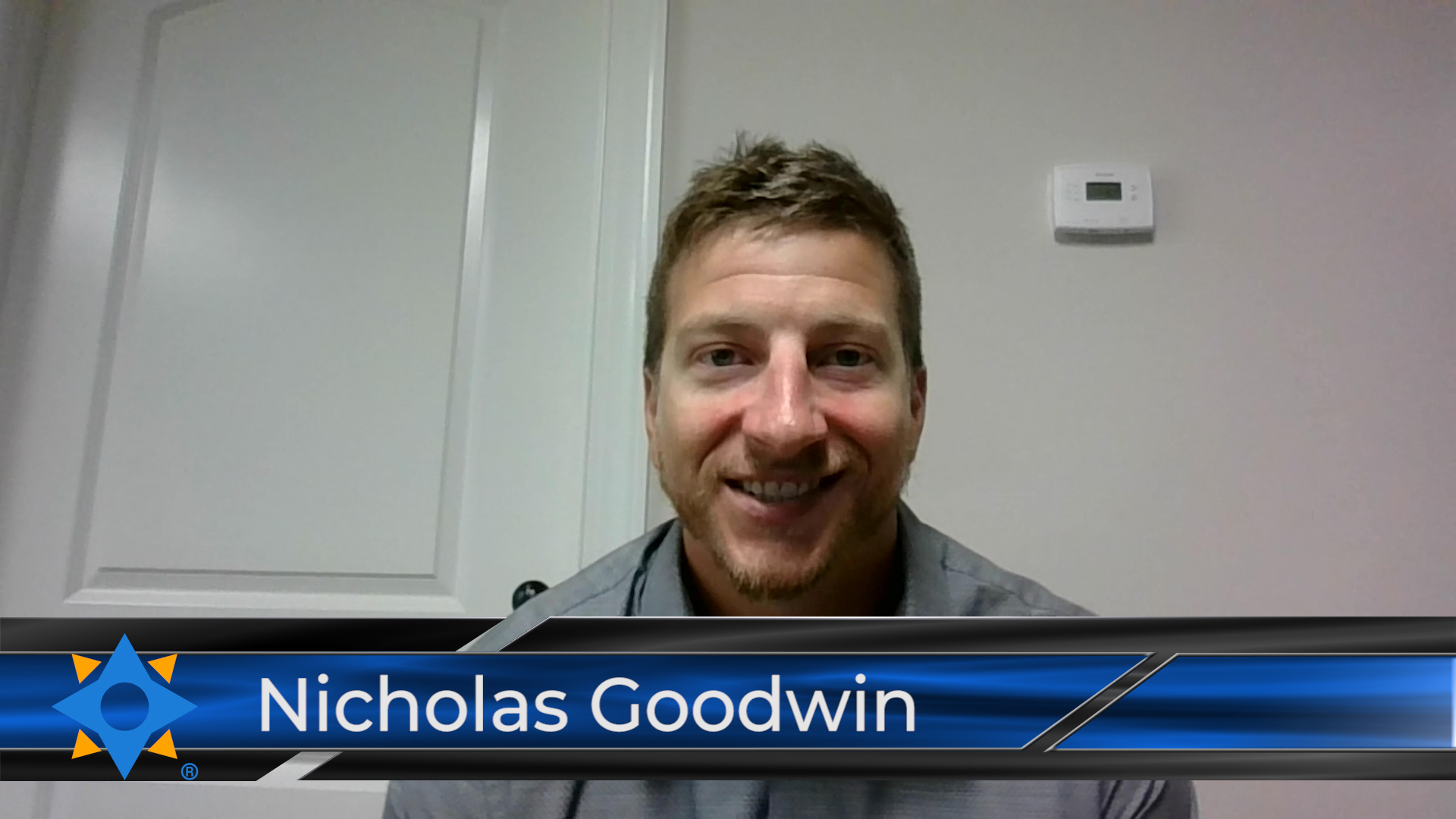
Nick Goodwin proudly served his country as a US Marine, but his reintegration into civilian life had its challenges. Watch Nick explain how his local VA hospital helped him overcome his alcohol use disorder by introducing him to SMART Recovery.
View the full video on our YouTube channel
Listen to Nick Goodwin’s podcast
Learn more about becoming a SMART volunteer
Learn more about the Veterans programs
Subscribe to the SMART Recovery YouTube Channel
Video storytelling is a powerful tool in recovery, and we are proud to share our SMART Recovery content free-of-charge, available anywhere, on any device. Our videos hope to inform, entertain, and inspire anyone in the recovery community.
Subscribe to our YouTube channel and be notified every time we release a new video.
Subscribe To Our Blog
Join our mailing list to receive the latest news and updates from the SMART Recovery Blog.
You have Successfully Subscribed!

Nick Goodwin is a SMART Recovery facilitator and co-chair of the new Veterans and First Responders meeting starting on November 10th. He is a former Infantry Officer, 3rd Battalion, 5th Marines.
In this podcast, Nick talks about:
Additional references:
Click here to find all of SMART Recovery’s podcasts
Subscribe To Our Blog
Join our mailing list to receive the latest news and updates from the SMART Recovery Blog.
You have Successfully Subscribed!
If you’re in recovery, the 12 steps have more than likely become the foundation on which you have built your life in sobriety. These steps have helped individuals suffering from substance use disorder restore purpose and structure in their lives for many, many years.
What can these steps offer to those who are not religious, or even to those not in recovery? At first glance, someone who has never abused substances might feel as though these steps aren’t applicable to them…I’m not powerless over alcohol! A new individual in recovery may see steps 5, 6, and 7 and think, I don’t even believe in God, how can the steps help ME? The beautiful thing about the steps and step-based programs is that they can provide solace, structure, and some wisdom to everyone.
- We admitted we were powerless over alcohol—that our lives had become unmanageable.
- Came to believe that a Power greater than ourselves could restore us to sanity.
- Made a decision to turn our will and our lives over to the care of our higher power as we understood it.
- Made a searching and fearless moral inventory of ourselves.
- Admitted to our higher power, to ourselves, and to another human being the exact nature of our wrongs.
- Were entirely ready to have our higher power remove all these defects of character.
- Humbly asked our higher power to remove our shortcomings.
- Made a list of all persons we had harmed, and became willing to make amends to them all.
- Made direct amends to such people wherever possible, except when to do so would injure them or others.
- Continued to take personal inventory and when we were wrong promptly admitted it.
- Sought through prayer and meditation to improve our conscious contact with our higher power, as we understood it, praying only for knowledge of its will for us and the power to carry that out.
- Having had a spiritual awakening as the result of these Steps, we tried to carry this message to alcoholics, and to practice these principles in all our affairs.
Take a page from the big book…why AA/NA wisdom can be helpful for all.
Powerlessness
As a human, you probably often think that you have autonomy over your life—that you can manipulate and control each variable to will things to go your way. Everyone gives into this illusion at times. The very first step reminds you that you are powerless. Not just over alcohol, but over most of the situations that occur day-to-day.
You can’t control whether or not it rains today, just like you can’t control how bad traffic is on your way to work. You can control how you respond to these events—maybe you grab an umbrella, or leave just a little earlier, or perhaps you make the most of your time in the car during your commute. By understanding that you’re powerless, you provide yourself with the opportunity to live in a greater sense of acceptance and peace.
Taking self-Inventory
What parts of yourself are hardest for you to accept? What comes to mind when you think of your flaws, your character defects, or your biggest failures? These aren’t comfortable things to think about, but in that discomfort, you will find growth.
Write these things down, tell someone you feel comfortable with, and work to fix the things you can change, and accept the things you cannot. As you work to improve yourself, you’re able to show up in a more positive way for those around you.
Turn your life over to something bigger than yourself (addressing the “God” word)
The truth is, you cannot handle all of the dealings of life alone, and you don’t have to. Whether you take your struggles to a higher power, a sponsor, a counselor, or the collective wisdom of a home-group, you must find some sort of greater purpose beyond just yourself. There’s an old saying that goes, “Practice waking up like it isn’t an accident,” This quote means that you should remind yourself each morning that there is a reason for every moment of your life, a greater purpose that you aren’t always able to zoom out and see.
When discussing greater powers and purpose, it’s important to note that AA/NA are not religious organizations. The entities do not offer this encouragement exclusively to believers of a higher power. A.A. co-founder Bill W. wrote in 1965:
We have atheists and agnostics. We have people of nearly every race, culture and religion. In A.A. we are supposed to be bound together in the kinship of a common suffering. Consequently, the full individual liberty to practice any creed or principle or therapy whatever should be a first consideration for us all. Let us not, therefore, pressure anyone with our individual or even our collective views. Let us instead accord each other the respect and love that is due to every human being as he tries to make his way toward the light. Let us always try to be inclusive rather than exclusive; let us remember that each alcoholic among us is a member of A.A., so long as he or she declares.
Bill’s words serve as a reminder that you are bound to others by your common struggles, regardless of your individual characteristics and beliefs. As the Agnostic and Atheist Members in A.A. Pamphlet says, “What we all have in common is that the program helps us find an inner strength that we were previously unaware of — where we differ is in how we identify the source. Some people have thought of the word “God” as standing for “good orderly direction,” or even “group of drunks,” but many of us believe that there is something bigger than ourselves that is helping us today.”
Whatever you believe to have a power greater than yourself is what will allow you to find purpose in your recovery, your mornings, and/or your life, every day.
Make amends and admit when you’re wrong
Unless you’re a robot, chances are, you’ve made some mistakes in your life. There’s probably someone, somewhere that you have an unresolved conflict with. Sometimes, admitting that you’re wrong can be the hardest thing to do. It can be hard to accept that you don’t always know the right way, have the right answers, and especially that you don’t always do the right thing.
It takes vulnerability to admit that you’re wrong. It opens you up to a discussion with yourself and others that may not be easy—but it will be worth it. When you think about life in its simplest form, you’re able to realize that all we have on this Earth is each other. The connections you have with your friends, family members, and co-workers matter. They shape your day-to-day interactions and your growth as an individual. When you begin thinking about someone you need to make amends with, reach out and ask for help by admitting your wrong-doings to someone you trust, a sponsor, a counselor, or a close friend. Repair relationships and practice admitting your imperfections so that you may continue to grow.
Help others and keep going!
As you work to practice the principles of the 12 Steps, you will gain infinite insight, wisdom, experience, and knowledge. You learn best when you teach something to others—yet another reason why strong interpersonal relationships are incredibly valuable. Pass on the things that you learn from practicing these steps of AA/NA. Most importantly, remember that this work is continuous, and requires conscious decisions made each day to learn and grow.
The 12 Steps are for everyone…
…because the steps focus on building a strong and solid foundation in life that supports personal well-being, self-care, care for others, and improve the quality of living. Anyone can benefit from principles rooted in those goals, both the believer and the non-believer, the recovering alcoholic, addict, and even someone who has never used a substance.
***
For more information, resources, and encouragement, ‘like’ the Fellowship Hall Facebook page and follow us on Instagram at @FellowshipHallNC.
About Fellowship Hall
Fellowship Hall is a 99-bed, private, not-for-profit alcohol and drug treatment center located on 120 tranquil acres in Greensboro, N.C. We provide treatment and evidence-based programs built upon the Twelve-Step model of recovery. We have been accredited by The Joint Commission since 1974 as a specialty hospital and are a member of the National Association of Addiction Treatment Providers. We are committed to providing exceptional, compassionate care to every individual we serve.

I was poking around in some journals looking for something to post about.
I found 3 articles that interested me. One describes the intuitive truth that insight is associated with change, while the other two seem to complicate acquiring that insight.
Broken brains?
Curing the broken brain model of addiction: Neurorehabilitation from a systems perspective challenges the brain disease model of addiction (BDMA) and proposes what they call a systems theoretical framework.
The article starts off with a fair description of the brain disease model:
From this perspective, now often referred to as the brain disease model of addiction (BDMA, Hall et al., 2015, Heather et al., 2018), a vulnerable brain may get “hijacked” by addictive drugs (Nesse & Berridge, 1997). Various neuroadaptations are thought to make behavior increasingly less voluntary and more compulsive, especially when cues indicate the presence of an opportunity to engage in addiction-related behavior.
Key words here are less voluntary and more compulsive. The description continues with appropriately qualified language like reduced control. It then transitions into framing the brain disease model as promoting “loss of free will” based on a lecture on YouTube from Nora Volkow in which she says:
I devoted all of my life to study the effects of drugs in the human brain. To try to understand what is it that they do to our brains that in some people that are vulnerable that can lead them to the complete loss of control with severe catastrophic consequences.
This hardly seems like a declaration that addiction is universally characterized by a complete loss of control. In fact, though articles like this frequently suggest that people who believe in the brain disease model of addiction asserts a complete loss of control, I find that view to be rare. Most describe impairment and episodic loss of control.
They reject the brain disease model on the basis of this characterization and its framing a a chronic condition with continuing vulnerability with “no road back to controlled use or recovery.” It attributes this thinking to 12 step programs. It seems strange to suggest that 12 step programs suggests their is no road to recovery.
It also object the chronic brain disease model on the basis that neurorehabilitation could “only be partially effective” because the “brain would remain hypersensitive.” To me, this is a strange objection. That a treatment might help put a chronic disease in remission is not a small accomplishment.
So what is the treatment? Neurorehabilitation is described as such:
Current (neuro)cognitive training or neurorehabilitation efforts in addiction can be categorized into two broad classes: training of (suboptimal) general functions, such as working memory (WM), and re-training of abnormally strong cognitive-motivational processes (“cognitive biases”) triggered by addiction-related cues, known as cognitive bias modification or CBM (Wiers, 2018). Regarding the first class of neurorehabilitation, there is evidence that training can improve the targeted general function (typically WM), and generalization to other relevant functions has been reported, such as delay discounting (Bickel, Yi, Landes, Hill, & Baxter, 2011), and future episodic thinking (Snider et al., 2018).
The chronic brain disease model doesn’t suggest that neurorehabilitation is of no value, it just would suggests that neurorehabilitation isn’t a cure.
The model seems to have a lot to offer and it does not seem incompatible with the chronic disease model or 12 step recovery. In fact, I could imagine an article on 12 step recovery as neurorehabilitation.
Harm to others?
Applying a ‘harm to others’ research framework to illicit drugs: political discourses and ambiguous policy implications examines “harm to others” as a framework for measuring social costs of substance use and developing policy.
During the past decade, ‘alcohol’s harm to others’ (AHTO) has emerged as an international approach to studying alcohol problems and advocating for improved policy. For example, the World Health Organization (WHO) has adopted AHTO as a stream of work in its global strategy to reduce harmful alcohol use. This approach seeks to identify and measure harms beyond the person who drinks (e.g. family members, co‐workers) in order to increase political will for enacting alcohol policy. The approach follows the way in which evidence of ‘passive smoking’, a form of harm to others, became influential in the debate and development of tobacco public policy.
Of course, this harm to others is frequently discussed in treatment and recovery, but I’d never seen this explicitly described or used as a research framework.
The article raises concerns about the framework on the basis of methodology (imprecision and inattention to micro level considerations), issues of individualism causality (“falsely delineating a perpetrator from a victim, as well as individualizing the cause of alcohol problems”), and stigmatization of individuals.
These measures focus on harms related to alcohol and the authors consider the application of the framework to drugs. They recommend rejecting “harm to others” in favor of “harm from others” on the grounds that it’s more accurate and less stigmatizing.
Of course, there is merit to the questions and concerns raised about the framework. And, the collateral harms experienced at the individual level are real, significant, and important.
There is a great deal of concern for harms experienced at the individual level by people who use drugs, but there appears to be remarkably less concern among AOD researchers for harm experienced by children, family members, neighbors, etc. via interactions with people who use drugs.
Stigma is a very important consideration, but our attention to stigma is an attempt to preserve the humanity of people who use drugs. We can’t erase the experience of others while trying to protect the humanity of people who use drugs.
This framework may not capture THE truth, but it does capture important truths and one important dimension.
Insight
Insight in substance use disorder: A systematic review of the literature found that “better insight was generally related to negative consequences from substance use, better treatment adherence and maintaining abstinence.”
A predictable challenge is determining how to define insight. There were 20 studies selected for the meta-analysis and there were 13 different measures used. The most frequently used tool was the Hanil Alcohol Insight Scale which is described as such, “The measure focuses on perceptions of drinking harms (e.g., ‘My drinking did no harm to any member of the family’) and the need for treatment (e.g., ‘It was fortunate to have a chance to be hospitalized’)”
The discussion lays out the relationship between substance use, consequences, insight, and motivation this way:
It is often only when there are other consequences such as loss of job, relationship problems, legal problems, or financial problems that people start to think they may have a problem that needs treatment. This could explain results from studies where participants with better insight also reported higher use, and more consequences of use such as relationship or work problems (Kim, Kim et al., 2007). An important finding from this review was identification of a relationship between readiness to change and insight (Kim, Kim et al., 2007; Slepecky et al., 2018). People with higher insight were more ready to change than their low insight counterparts.
What’s the throughline?
If insight is associated with higher levels of readiness to change, treatment adherence, and abstinence, it invites the question “insight into what?”
The articles about the brain disease model and harms to others are typical of a lot of academic work on drug and alcohol problems.
A lot of people generating academic knowledge seem focused on casting doubt upon and destabilizing the ideas that patients would achieve insight into.
The realizations that “I can’t control my substance use” and “my substance use is hurting the people I love” serve as an inflection point for so many people, leading them to seek help and change.
I don’t completely understand this consistent effort to destabilize these insights and who it serves.

This week, I listened to an excellent interview on The Best Minds Podcast featuring Harvard trained physician and internationally recognized addiction expert Dr Robert DuPont. I was struck by his humble wisdom. He spoke about his early work with methadone patients and how many of them eventually died from alcoholism. He spoke about how narrowly focused, well-meaning care focused on opioids and not on addiction, of which opioids is only one facet. We owe Dr Dupont and others like him a great debt for their contributions and the humility of acknowledging who the experts on recovery are – people with lived recovery experience. He and others of his caliper and wisdom made space for us to talk about the value of community in recovery and strengthen recovery efforts.
Such wisdom is unfortunately rare. It reminded me of a few years back of an encounter I had with Mr. David Mactas. We brought him in as our keynote speaker for our agencies 20th anniversary celebration. He was the first Director of the Center for Substance Abuse Treatment for the US Dept. of Health and Human Services. He played a major role in establishing the federal Recovery Community Service Project – State Network Grants. The grants were vital to establishing the first recovery community organizations in America, and PRO-A was an initial recipient. Space was being made for lived experience to inform our care systems and strengthen our community. Recovery history was being made.
One of the best parts of the event was getting to spend time with him. He is a brilliant man with deep insight into treatment and recovery efforts. I spoke with him about what those grants meant for recovery community organizations across the nation and the fruit that his efforts had yielded. We spoke of the New Recovery Advocacy Movement and the progress and challenges that we had experienced.
He noted in our conversation that movements end. The words hit me like a ton of bricks and still resonate. Movements do indeed end and not necessarily with accomplished objectives. They have been in the back of my mind ever since.
How will we answer that question?
For readers who may not be aware of what the New Recovery Advocacy Movement is, I would point to to the immense contributions to our history and the conceptualization of recovery efforts by thought leader Bill White. His collection of papers can be found HERE. It would be hard to overstate the contributions he has made to our efforts to save lives and heal communities through the power of recovery community. He has also done more than anyone else to catalogue and preserve our history.
I view Bill White’s work as essentially the Svalbard Global Seed Vault of recovery. The global seed vault stores seeds in the event that pestilence, drought or other events wipe out essential food crops. It holds the food security of humanity inside its very walls. Bill White has established out recovery seed vault trough his vast collection of writings. When the new recovery movement ends, our history and the things that we have learned along the way are preserved within his vault. Accumulated wisdom for future generations to use these seeds to replant and start over.
The potential end of the new recovery advocacy movement has been very much on my mind over the course of the last year. This is not the first time I have written on this topic. Many others are concerned. I am regularly taking to people from across the nation about the myriad of ways the recovery community is currently being marginalized. Key policymakers in varying positions do not actually believe we get better because they lack lived experience. Our system is replete with academic and medical experts who lack lived experience and direct knowledge of what works in real life conditions or the wisdom and humility to listen to our community. There is a growing dialogue that treatment does not work, recovery is not for everyone with addiction, we cannot possibly help everyone and some people do not want to break out of addiction. Money related to the “opioid epidemic” which is actually an addiction epidemic never actually reached us, instead it went to large academic groups, think tanks and institutions who became interested in addiction the moment there was money to be had. The results for us have been nothing other than tragic. We are dying. It is not an academic exercise for our community it is life or death.
If there was ever a time to get our nation focused on getting more people into long term recovery, it is right now. COVID-19 is fueling some of the underlying facets that drive addiction in America. Developing and sustaining the type of care and community support system we will need to save lives and heal communities is simply not possible without meaningful inclusion of the recovery community.
To do this we need sustained, collaborative efforts focused on care that focuses on recovery in meaningful ways. If we fail this, the movement will end sooner than later and it will end without achieving our goals.
What should we focus on if we are to sustain our movement and accomplish meaningful, recovery focused changes to our care system?
- Full inclusion of persons in recovery in the design, implementation, delivery and evaluation of services in order to ensure that care meets the needs across the full spectrum of diverse persons seeking help.
- Tools to hold our care systems accountable when disparate, short term care is provided to ensure that applicable laws around access and duration of services are consistent with applicable laws.
- Long term, whole person recovery focused research that examines recovery over the long term in order to understand what works for whom and under what conditions.
- Focused effort to reorienting our entire addiction care system to fully create and sustain the five-year recovery care model as the research is showing us is that this is the point at which 85% of persons will remain in recovery for life.
I am grateful that we have a seed bank of recovery, but would prefer to be adding stock to it rather than closing the doors and preserving it in hopes that the next generation can pick up where we left off and more of us die needlessly.
What happens with the new recovery advocacy movement depends on us, and most likely what we do in the coming months. We tend to accept stigma and discrimination at the very moment we should rally against it.
The words of Harold Hughes ring in my ears:
“We in recovery have been part of the problem. We have both accepted and perpetuated the stigma that kept us from getting help and that has killed millions of addicted victims. By hiding our recovery, we have sustained the most harmful myth about addiction disease: that it is hopeless. And without examples of RECOVERING people, it’s easy for the public to continue thinking that victims of addiction disease are moral degenerates – and those that are RECOVERING are the morally enlightened exceptions. We are the lucky ones – the ones that got well, and it is our responsibility to change the terms of the debate, for the sake of those who still suffer.” – Senator Harold Hughes
Are we going to hide our recovery and descend back into the basements, tear each other up in factional disputes or continue to be coopted by outside groups?
The answer is up to us. Right here, right now.
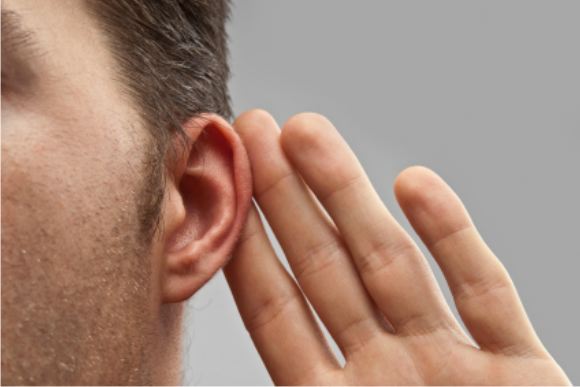
In times past, for those with opiate use disorder who were in treatment in therapeutic community settings, as progress was made and days abstinent from opiates grew, a beer might be allowed by staff, say on a Saturday night, in a supervised and supported fashion. Not in any service I have worked in, but nevertheless true in some settings. For some, it didn’t end well.
As I’m writing the words, I’m thinking of the numerous patients I’ve known who, despite warnings, have relapsed to opiates through drinking alcohol, or who have remained abstinent from opiates and gone on to develop an alcohol use disorder. Unhappy memories.
One reason for this disconnect or blind spot is our tendency to make diagnoses in limited silos like ‘opioid use disorder’ or ‘opiate dependence’ when the vulnerability is to substances (and harmful behaviours). When considered in the light of the neurobiological, trauma-related, learning and genetic evidence on addiction, it makes sense that we think in a broader fashion.
Robert Dupont, an early pioneer of methadone clinics in the USA, makes this point powerfully in the interview that Jason linked to the other day when he began to realise that despite his patients being in a high quality MAT programme, some of them were dying of alcohol dependence. Dr Dupont was forced to reconsider what he thought he knew about addiction. It’s an illuminating podcast.
Opiates & Alcohol
In opioid replacement therapy populations it has been reported that as many as a third of people misuse alcohol, which has all of the usual negative health consequences that alcohol problems bring but is clearly also dangerous because of the risks inherent in mixing depressant drugs. SAMHSA indicates that between a half and two thirds of opiate-dependent individuals are problem drinkers.
In a study from last year, Dr Shannon Kenny and her colleagues explored patient expectations after detox. They looked at 417 patients who had gone through an opiate detox programme. They found that patients often didn’t have any intention of stopping using other substances.
The researchers remind us that use of alcohol, benzos and cocaine at treatment entry into opioid treatment programmes predicts poor outcomes. (Therein lies the problem – if we consider we are only offering opioid treatment to those with polysubstance dependence, then we are not addressing the full picture.)
In their sample, around 50% reported alcohol use recently, nearly half had used cocaine and nearly half had used benzos. About a quarter reported using all three substances. This fits with my clinical experience.

They reference previous research showing that in medication treatment programmes, clients find it ‘too much’ to quit both opioids and other substances at the same time.
In their sample, around half of those undergoing opioid detox did actually intend to quit drinking, but this was much lower for benzos and almost non-existent for cocaine. They state:
Despite near universal intention to quit heroin—our past work has found that 98% of withdrawal patients intend to quit heroin—our results suggest that many people initiating heroin withdrawal management have no expectation of participating in the total abstinence model of recovery.
They conclude that ‘inpatient heroin withdrawal programs need to address and educate patients about how polysubstance use complicates recovery from heroin use.’ I agree, we need to be really clear about what’s going to help people reach their goals and what’s going to stop them dead in their tracks. There is a clear role for harm reduction here, but also, I would argue, for raising the bar on what’s achievable overall.
We can learn from research, but we can also learn from the past.
Important lessons
History promises us important lessons if we sit at her feet and listen carefully to her stories
William White
Bill White looks to experience to give some pointers on drinking in recovery from opioid dependence in an old article from Counselor Magazine.
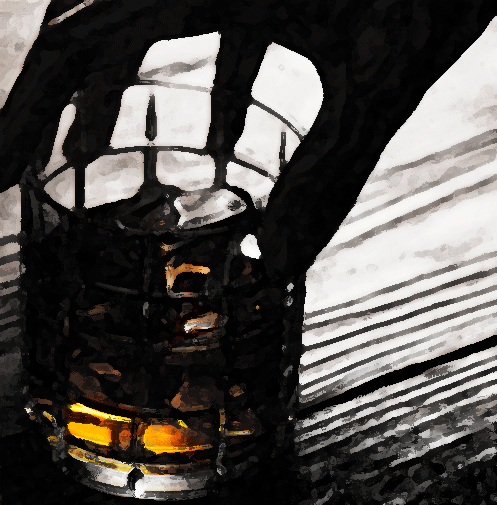
He details the start of the Therapeutic Community movement (Synanon) when clients in treatment (generally recovering heroin addicts) could gain ‘drinking privileges’.
Sounds progressive. So how did it go?
White relates that alcohol problems grew within Synanon in the 1980s and contributed to Synanon’s eventual implosion as an organisation.
Okay, not so well then, but what about other organisations?
White also reports the experiences in ‘Daytop’ a New York therapeutic community. This time there were safeguards: drinking was only permitted for those with no prior history of alcohol problems. They reasonably assumed that in this group the risk of dependence would be about the same in the general population (6-10%). They also had a policy of non-acceptance of intoxication.
So how did that go?
‘The first signs of problems with the alcohol policy within Daytop and other TCs followed a predictable two-stage pattern. The first stage was the appearance of drinking at social events within the TC community (e.g., staff parties) and at outside professional conferences that exceeded the bounds of social drinking and sparked other inappropriate behaviors. The second was the development of severe alcohol problems (or relapse back to heroin and other drugs while under the influence of alcohol) among some TC staff and graduates.’

Any red flags?
White details some factors reported, but not evidenced, which might predict future problems:
1) A family history of alcohol problems,
2) A history of alcohol problems predating the emergence of another pattern of drug dependence,
3) Co-addiction to alcohol and other drugs prior to entry into treatment,
4) The presence of a co-occurring psychiatric illness,
5) A history of childhood victimization,
6) Later developmental trauma (e.g., loss via death or separation), and
7) Enmeshment in a heavy drinking social network.
When I apply these criteria to the people I typically work with, then there aren’t many left outside the fold.
I know some people in recovery from heroin addiction who drink alcohol, apparently without problems. They are few in number in my experience but they exist. I know many more who have tried to drink in a healthy fashion following opiate detox and treatment who have failed. I believe that the things that make people vulnerable to heroin addiction, also make them vulnerable to alcohol and other substance dependence and that although we cannot precisely quantify the risk, it is significant.
Helping our patients (or clients) make informed choices is a fundamental part of what we do in addiction treatment settings. Addressing the risks around drinking (and using other substances) for those with opiate use disorder needs to be at the heart of our treatment programmes and our programmes need to be designed to tackle addiction, and not be so focussed on single substance use.
The answer to the question – ‘is it okay to drink if you are in recovery from opiate dependence?’, is most likely – no.

